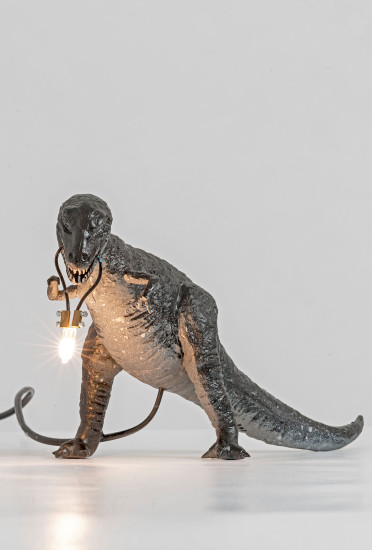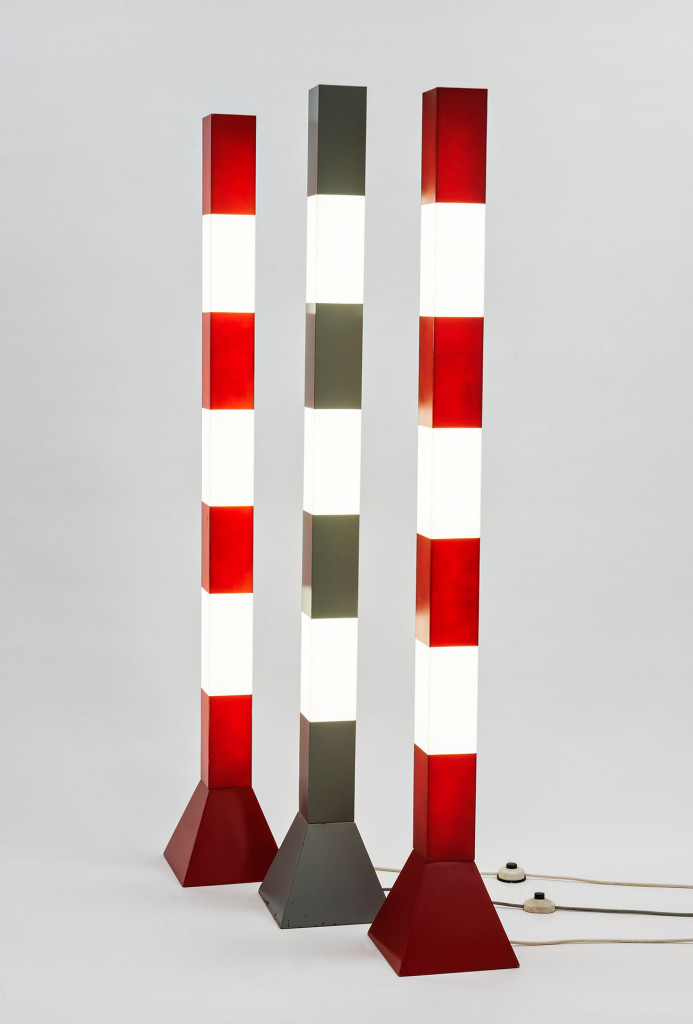Positions clash when it comes to the 80s: While the mere memory of shoulder pads, mullets and Nena makes some go into rhapsodies, it gives headaches to others. The situation is also a bit tricky with the design of those days. Why is the taste of the 80s a bone of contention?

Möbel perdu (Michel Feith), lamp Tyranno, 1984. Plastic, light bulb.
Not least, this might be due to the eccentricity of many designs of that polarizing decade. For example, this dinosaur lamp. Would you put it into your living room? Exactly.
From the middle of Octobre on, the Bröhan-Museum in Berlin deals with a design movement of the 80s: The exhibit Schrill Bizarr Brachial shows pieces from the Neues Deutsches Design [New German Design]. The movement incorporated, similar to the Neue Deutsche Welle for music or the Neue Deutsche Film for movies, a radically new approach: Design beyond systems of industrial production and nourished by various cultural and subcultural sources. The protagonists were young artists and designers from Western German metropolises.
80 of the most important designs from the movement will be presented, among those furniture and objects by Stiletto, Volker Albus, Andreas Brandolini, Axel Kufus and several groups like Möbel perdu from Hamburg or Bellefast and Cocktail from Berlin. As the show’s title implies : many design objects range between irony and kitsch. Schulz-Pilaths table Tarantula ressembles a spider crawling through the living room, when sitting on Stilettos Consumer´s Rest Lounge Chair, one actually sits on a converted shopping cart and with the floor luminaire A59 Volker Albus brings the Autobahn into the flat.
The Neues Deutsches Design movement originated in the wish to break with the tradition of the Gute Form [good shape], which aimed at a factual and efficient shaping of things. The liberterian German movement of 1968 and the era Willi Brandt engulfed the latter design approach into a crisis. Now objects were supposed to tell stories, to reflect the society’s situation reflektieren or to be thought-provoking. Loosely based on Christian Borngräber’s motto : “The optic nerve may be teased, the backside not” .
Schrill Bizarr Brachial is the first big exhibit which retrospects with historic distance a phenomenon which only had a short heyday : from 1982, when a first exhibit titled Möbel perdu – Schöneres Wohnen [more beautiful living] took place in Hamburg, until the German reunification. The Neue Deutsche Design is also a contemporary document for a picture of a Germany, which nowadays does not exist anymore, and one of the last big cultural achievements of the old Bundesrepublik.
Text Agata Waleczek
Photos Martin Adam
- —
-
Bröhan-Museum
Schloßstraße 1a
14059 Berlin, Deutschland - Link

![Andreas Brandolini, <em>Deutsches Wohnzimmer – Ensemble für die Documenta 8</em> [german living room – ensemble for the Documenta 8], 1987.](https://artaurea.com/wp-content/uploads/2014/10/Brandolini-Deutsches-Wohnzimmer-1024x692.jpg)

![Axel Kufus/Ulrike Holthöfer, table lamp <em>Lichterstrauß</em> [light spray], 1985. Telephone cable, cable strap, luminous elements.](https://artaurea.com/wp-content/uploads/2014/10/Tischleuchte-Lichterstrauß-693x1024.jpg)
